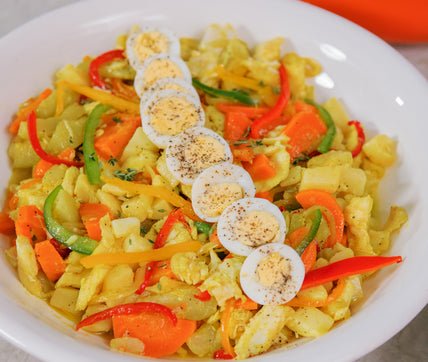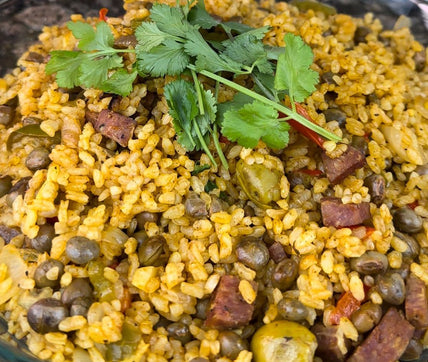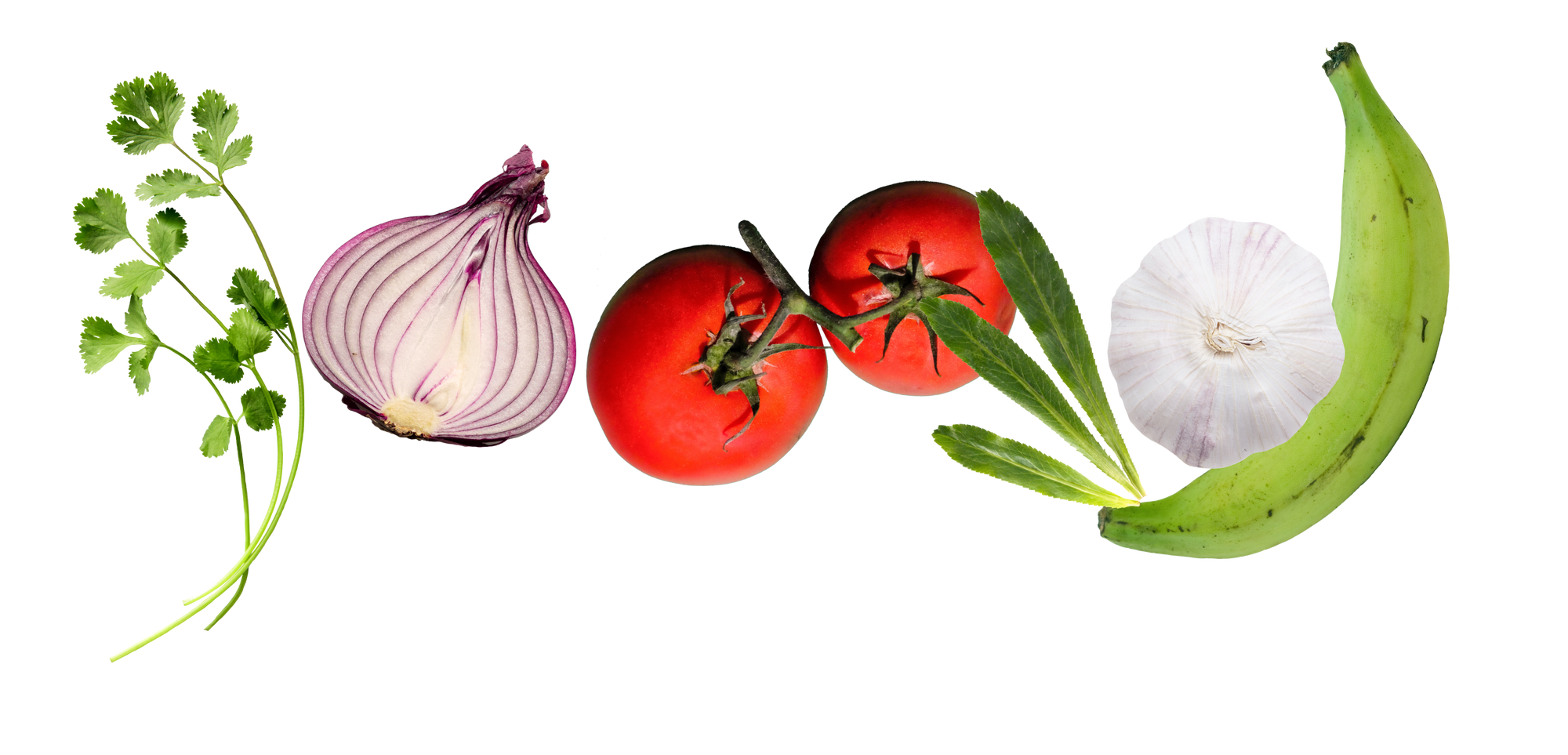
Easy Weeknight Sancocho
Try this easy sancocho recipe when you're craving something hearty and comforting but are short on time.
By: Belqui Ortiz-Millili | @belquistwist
In the heart of the Caribbean, Dominican Sancocho is as a culinary emblem. This hearty and comforting stew– a mix of Caribbean root vegetables and meat– reflects the essence of Dominican cuisine, and it's a dish that has been bringing people together for generations. Typically, sancocho takes about two hours or more to come together– slowly tenderizing the meat and hearty vegetables together over low heat. But, we don’t always have that kind of time, do we? This recipe is a sancocho shortcut for those days that you may be craving the comfort of this classic dish but don’t have hours to bring it together. I’m calling it my weeknight sancocho!
Sancocho is more than just a meal; it's a symbol of Dominican hospitality and a testament to the country's rich history. The basic ingredients of this Sancocho include chicken, thin rib tips, calabaza, yuca, green plantains, potatoes, corn, and sofrito to unite all these special flavors together. This delightful combination of ingredients yields a stew that is both hearty and comforting, making it perfect for any occasion, from casual family gatherings to festive celebrations.

For my weeknight sancocho, a key time saver is Loisa’s Classic Sofrito, which I always have handy when I don’t have time to make my own Sofrito. Based on Chef Yadi Garcia’s Dominican family recipe, this Sofrito has everything you’d want to add that authentic Latin flavor to dishes like sancocho. It includes fresh ajicito dulce peppers, culantro (also known as recao), cilantro, tomatoes, and a few organic spices that contribute to its depth of flavor. Depending on where you live, it can be hard to find these ingredients at local grocery stores, so I love having a few jars of this on hand.
One of my favorite ingredients that is a popular addition to Sofrito is ajicito dulce peppers. Also known as "ají dulce,” these are small, non-spicy peppers that are known for their sweet and fruity flavor, which is reminiscent of a mild bell pepper with subtle citrus notes. They’re an excellent choice to add nuanced flavor to dishes and they’re commonly used in Latin American and Caribbean cuisine. Their distinct taste sets them apart from more traditional spicy chili peppers. Ajicito peppers are particularly popular in Puerto Rican cuisine, where they are a key ingredient in Sofrito. They are also used in the Dominican Republic, Venezuela, and other countries throughout the Caribbean and Latin America. Thank you, Loisa for including these in your Sofrito!

Ajicito peppers are particularly popular in Puerto Rican cuisine, where they are a key ingredient in sofrito. They are also used in the Dominican Republic, Venezuela, and other countries throughout the Caribbean and Latin America. In Puerto Rican cuisine, they are often referred to as "ají dulce" and are an essential component in dishes like mofongo and arroz con gandules. Ajicito peppers are cherished for their ability to impart a unique and pleasant flavor to a wide range of Latin American and Caribbean dishes. Their mildness makes them an accessible and versatile ingredient, allowing cooks to experiment with various recipes without overwhelming spiciness. Whether used in sofrito or as a finishing touch in a stew, like sancocho, ajicito peppers are guaranteed to add something special to your dish.
When I think about sancocho, I remember the rich history that traces its roots back to the Dominican Republic and the broader Caribbean region. Its origins are closely tied to the blending of indigenous, African, and European culinary traditions, making it a true reflection of the diverse history and culture of the Dominican Republic.

The transatlantic slave trade brought Africans to the Caribbean, and they contributed immensely to the region's culinary heritage. African traditions introduced various seasonings, spices, cooking techniques, and key ingredients which greatly influenced the flavors and preparation methods of dishes like Sancocho. In particular, the use of various herbs, spices, and cooking methods such as stewing had a profound impact on Caribbean cuisine.
Sancocho evolved as a result of these diverse culinary influences. The stew combined Spanish meats with indigenous vegetables and the aromatic seasonings introduced by African cooks. Over time, different variations of sancocho emerged throughout the Caribbean. Each region putting its own spin on the dish based on locally available ingredients, as well as regional spices and traditions.

Puerto Rican sancocho often features a mix of proteins like chicken, pork, and even goat meat. The root vegetables used may include yam, yautía, and ñame (yam-like tubers). In Colombia, sancocho is known for its hearty, thick broth. It commonly includes chicken or beef, corn on the cob, yuca (cassava), potatoes, and plantains. A special ingredient is "guasca," a local herb that imparts a unique flavor. Colombian sancocho is often served with a side of rice and avocado.
Furthemore, in Cuba, sancocho is typically prepared with a combination of pork, beef, and sometimes chorizo. The base consists of starchy vegetables such as yam, malanga, and plantains. The Cuban version is known for its savory tomato-based broth and is often seasoned with cumin, garlic, and onions. And in Venezuela, sancocho is a hearty stew that typically includes beef, pork, or chicken. The vegetables used can vary but often include plantains, potatoes, and corn on the cob. The distinctive feature of Venezuelan sancocho is its use of malanga, a starchy tuber. It's seasoned with herbs like cilantro and served with arepas or rice.

Each region's version of sancocho reflects the local ingredients and culinary traditions, offering a taste of the diversity found across Latin America. Despite these variations, one thing remains consistent: sancocho is a beloved dish that brings people together and warms the heart and soul, showcasing the cultural richness of this vibrant continent. So, get yourself a bowl and enjoy!



